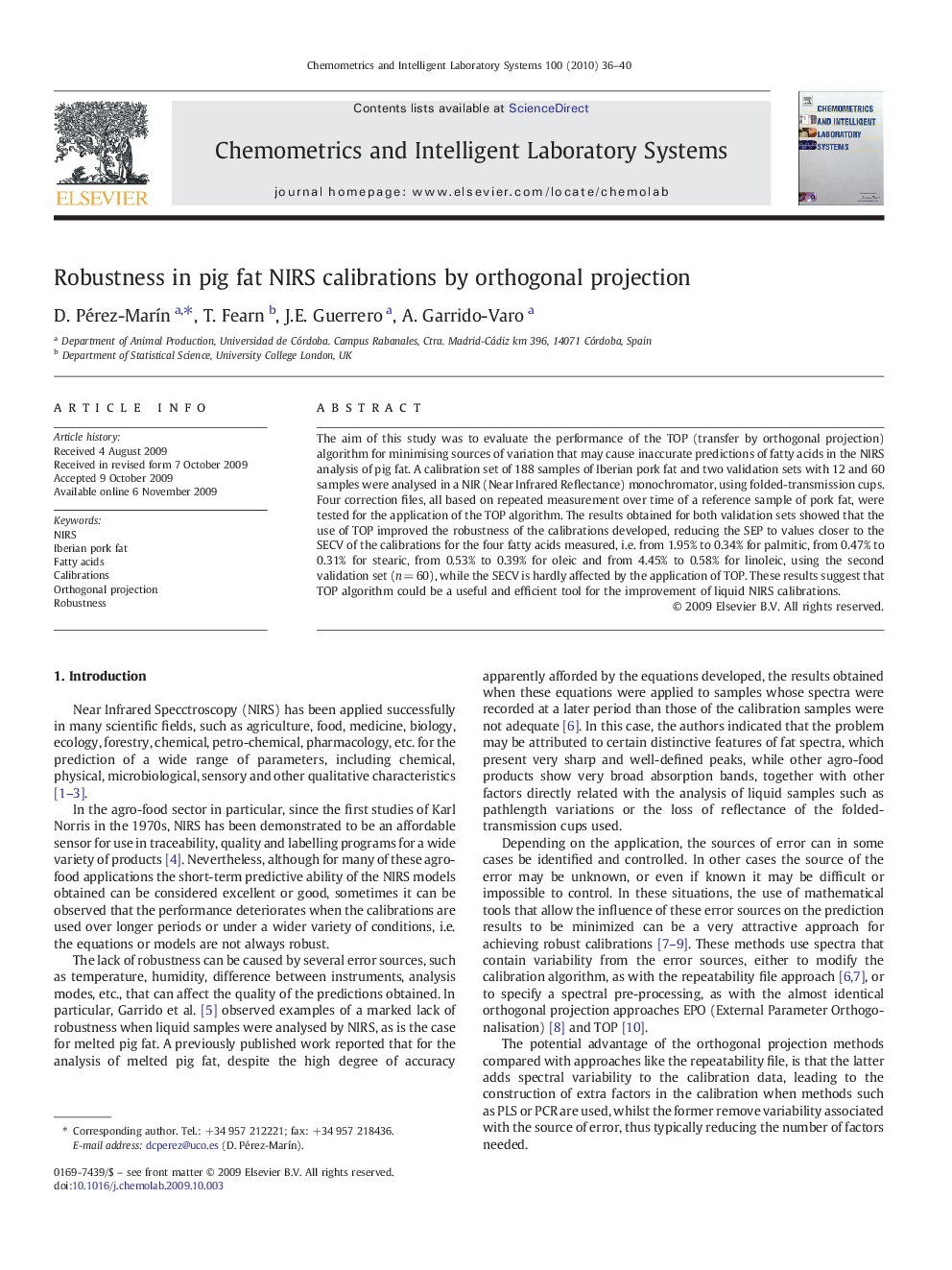| Article ID | Journal | Published Year | Pages | File Type |
|---|---|---|---|---|
| 1181477 | Chemometrics and Intelligent Laboratory Systems | 2010 | 5 Pages |
The aim of this study was to evaluate the performance of the TOP (transfer by orthogonal projection) algorithm for minimising sources of variation that may cause inaccurate predictions of fatty acids in the NIRS analysis of pig fat. A calibration set of 188 samples of Iberian pork fat and two validation sets with 12 and 60 samples were analysed in a NIR (Near Infrared Reflectance) monochromator, using folded-transmission cups. Four correction files, all based on repeated measurement over time of a reference sample of pork fat, were tested for the application of the TOP algorithm. The results obtained for both validation sets showed that the use of TOP improved the robustness of the calibrations developed, reducing the SEP to values closer to the SECV of the calibrations for the four fatty acids measured, i.e. from 1.95% to 0.34% for palmitic, from 0.47% to 0.31% for stearic, from 0.53% to 0.39% for oleic and from 4.45% to 0.58% for linoleic, using the second validation set (n = 60), while the SECV is hardly affected by the application of TOP. These results suggest that TOP algorithm could be a useful and efficient tool for the improvement of liquid NIRS calibrations.
